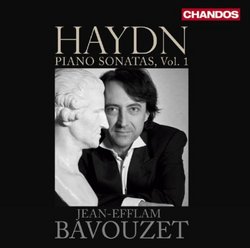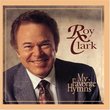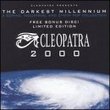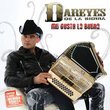| All Artists: Jean-Efflam Bavouzet Title: Haydn: Piano Sonatas, Vol. 1 Members Wishing: 3 Total Copies: 0 Label: CHANDOS CHACONNE Original Release Date: 1/1/2010 Re-Release Date: 3/30/2010 Genres: New Age, Classical Styles: Instrumental, Historical Periods, Classical (c.1770-1830) Number of Discs: 1 SwapaCD Credits: 1 UPC: 095115158623 |
Search - Jean-Efflam Bavouzet :: Haydn: Piano Sonatas, Vol. 1
 | Jean-Efflam Bavouzet Haydn: Piano Sonatas, Vol. 1 Genres: New Age, Classical
|
Larger Image |
CD DetailsSimilar CDs |
CD ReviewsRight Up There with Hamelin's Haydn J Scott Morrison | Middlebury VT, USA | 04/02/2010 (5 out of 5 stars) "Until Jean-Efflam Bavouzet came out with his series of CDs of all the piano music of Debussy, I'd never heard of him. But those Debussy CDs made me (literally) sit up and listen. Debussy: Complete Works for Piano, Vol. 1, Debussy: Complete Works for Piano, Vol. 2, Debussy: Complete Works For Piano, Vol. 3, Debussy: Complete Works for Piano, Vol. 4, Debussy: Complete Works for Piano Vol. 5 I wasn't the only one who was struck by the beauty of his playing; he was excitedly praised in Gramophone, Fanfare, and American Record Guide and he got a cover story in International Piano. Those CDs were easily the best Debussy I'd heard since the fabled Gieseking recordings of half a century ago and, of course, are in much better sound. Now he has turned his attention to the piano sonatas of Haydn. This issue is labeled Vol. 1, so I am assuming he intends to record all 60 or so of them. We have not lacked for wonderful Haydn piano recordings. One remembers those of John McCabe Haydn: The Complete Piano Sonatas and especially the recent two sets by Marc-André Hamelin Haydn: Piano Sonatas & Haydn: Piano Sonatas Vol.2. One would not immediately think that a Debussy player would be suited for Haydn. But if one listens to Bavouzet's Debussy one recognizes that, in addition to flawless technique, he gave Debussy the kind of rhythmic incisiveness and spine that they often don't get. And those are two things that Haydn also requires. The four sonatas featured here are: Sonata No. 39 (Hob. XVI:24) in D major, No. 47 (Hob. XVI:32) in B minor, No. 31 (Hob. XVI:46) in A flat major, and No. 49 (Hob. XVI:36) in C sharp minor, played in that order. [Somewhat confusingly, the booklet note by Haydn scholar Marc Vignal (author of the excellent 'Joseph Haydn, l'homme et son oeuvre') comments about the sonatas in the order in which they were composed, at odds with the order in which they are played on this disc.] The first movement of Sonata No. 39 is notable for its rapid repeated notes which Bavouzet plays with excitement and precision. It was almost certainly written for harpsichord rather than piano. Vignal calls its first movement Mozartian; I would prefer to call it Scarlattian. Whatever you call it, it makes a brilliant impression. The Adagio sounds rather old-fashioned for its year of composition, 1774, with its Bachian cantilena. It leads without pause in a Presto finale of great virtuosity. It features irregular phrase-lengths and much tossing of thematic fragments from one hand to other. Formally this movement is in variation form with an elaborated coda. The first theme of the powerful Sonata no. 47 starts with two long notes followed by a sharp dotted-note reply. The key of B minor is accentuated until the end of the exposition when the harmony shifts gradually to the relative major key of D. The gentle Minuet is in B major and represents an island of tranquility between the two outer movements. Drama returns in the whirling Presto finale, a sonata-allegro movement that features some of the most virtuosic writing in all of Haydn's writing for piano. Haydn keeps ratcheting up the tension to the very end with forceful unisons leading to the final two fierce chords. Sonata No. 31 is unusual in that all three of its movements are in sonata-allegro form. The first movement has Haydnesque surprises in plenty. Its development is very long for Haydn (even longer than the exposition) and features a kind of drumming in the left hand. The Adagio has marvelous three-part counterpoint and its recapitulation is truncated. Bavouzet has written his own cadenza for this movement leading into the short recapitulation; it has some mildly anachronistic harmonies (but nothing like the shockingly modern cadenza by Alfred Schnittke that Gidon Kremer played in his recording of the Beethoven Violin Concerto!). Indeed, unless you're listening particularly acutely you might not even notice this. It is expertly done. The Presto finale is a rustic romp of a dance. I felt, for the only time on this CD, that Bavouzet played the movement a little too quickly, but it certainly is exciting. The Sonata No. 49 opens with two elements that dominate the proceedings throughout: a forceful unison, and a plaintive answering motif. This first movement is marked Moderato, a tempo that tends to emphasize the sad or peremptory nature of its C sharp minor key signature. The second movement is an Allegro con brio; thus the sonata's arrangement of movements is slow - fast - slow, the reverse of the form usual for the time. This fast movement is a set of alternating variations on unrelated themes ( ABA'B'A" plus coda). The sonata concludes with a Minuet whose minor key main sections bracket an almost Schubertian major key Trio. Bavouzet's playing is cleanly etched, brilliantly dramatic, menacing or briskly energetic where it needs to be and consolatory and tender in the sections of repose. He takes all the repeats and subtly ornaments them. This is extraordinary Haydn playing and I look forward to further issues in this series. Scott Morrison " Great Haydn playing Bing-Alguin | 06/22/2010 (5 out of 5 stars) "This is most remarkable! While I didn't appreciated Jean-Efflam Bavouzet's Debussy interpretations as much as many did, admirable and brilliant though they are, but lacking some of the impressionist magic prevalent in Gieseking's, Michelangeli's and Ousset's outstanding playing, I surrender totally to his Haydn interpretations. I now consider Bavouzet's performances to be, up to now, the ideal form of playing this superb and radiant piano music that never had a real congenially superior interpreter. Is Bavouzet the perfection of Haydn playing? With his complete and composed distinction and his personal liveliness, his never-failing technique and miraculous timing - necessary when performing Haydn -, his sense of humour and his rich, emotional undertones, he gives us an truly exciting experience of what Haydn's piano music really is.
You can feel it already in the first of the four sonatas here introduced: No 39 in D major. It is a glorious beginning, and the following ones: No 31 in A flat major, No 47 in B minor and No 49 in C sharp minor, are as convincing and as much arousing enthusiasm. Listen in particular to the flashing Presto in No 47, the Adagio in No 31 with Bavouzet's own cadenza, and the Scherzando in No 49! This is only the first volume in a projected series. There is no doubt I will tuck right into the rest of them, as fast as they appear!" |

 Track Listings (12) - Disc #1
Track Listings (12) - Disc #1


